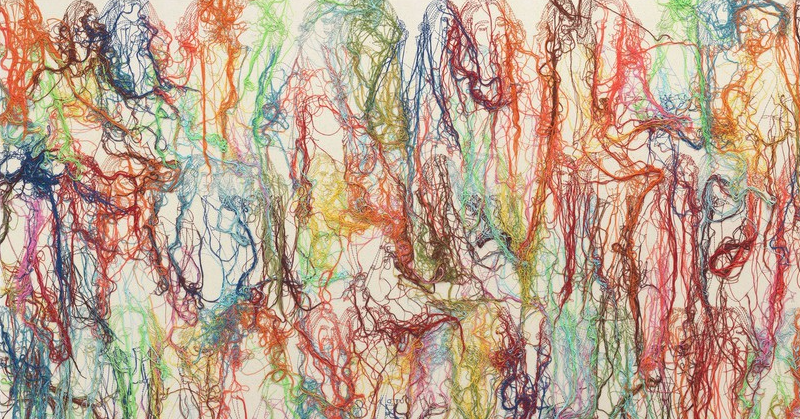On Monday 21 June the Swedish government fell. It was a strange coalition, voted down by another strange coalition. The administration was led by the Social Democrats (SAP), with the right-wing former trade union leader, Stefan Löfven, as Prime Minister. It included the smallest parliamentary party, the Environment Party, and relied on a confidence-and-supply arrangement with Sweden’s two most neoliberal groupings: the Centre Party and the Liberals. Its parliamentary majority was also contingent upon the votes of the Left Party, which last week withdrew its support, joining with the three conservative parties – the Moderates, the Sweden Democrats and the Christian Democrats – to pass a motion of no confidence. The Centre and the Liberals abstained.
Sweden has a parliamentary system based on proportional representation in multi-member constituencies, with the threshold for representation set at 4% of the national vote. Eight parties currently sit in parliament. The reason for the bizarre political games of recent weeks was a deadlock in which neither the left-of-centre – composed of the Social Democrats, the Left and the Environment Party – nor the traditional bourgeois bloc of Moderates, Centre, Christian Democrats and Liberals, could command a majority.
Until recently the third largest party – the xenophobic Sweden Democrats, with roots in the neo-Nazi and white power movements of the 1980s and 90s – was regarded as beyond the pale. In the other Nordic countries, xenophobic parties have formed governments or been invited into bourgeois coalitions. But Sweden remains more open and tolerant than its neighbours, with a significantly larger immigrant population. In 2018 the Social Democrats had their worst electoral result since the introduction of near-universal male suffrage in 1911, winning only 28.3%. Yet they remained the largest party, 8% ahead of the Moderates. After four months of negotiations a government accord was reached, keeping the Sweden Democrats out, and winning the support of the Centre and Liberals in exchange for 73 separate policy commitments.
These included: maintaining possibilities for profit maximation in social services; dismantling the public labour exchanges that were once the lynchpin of the social democratic full employment policy; changing labour legislation to make it easier to fire certain employees; and abolishing rent controls in new housing projects. The list also contained some modest climate policies, more resources for regions and municipalities, and one meagre social democratic proposal: a ‘family week’ which gives parents three days off to spend with their children during the school holidays.
The pact was a major achievement for the Centre and Liberals, who got the SAP to accept a number of policies which had been ruled out by the Moderate-led coalition of 2006-14. In exchange, the Social Democrats got the premiership and split the bourgeois bloc. The Left got nothing, apart from an insulting clause stating that they should have no influence on budgetary decisions. Yet its parliamentary support was necessary for the new government, and in the end it acquiesced to the SAP after intensive talks with Löfven.
The Swedish Left Party grew out of the Communist Party, which since 1964 was the pioneering ‘Eurocommunist’ formation avant la lettre: democratic, critical of the USSR, heterodox and intellectually engaged (it invited the editors of New Left Review to one of its seminars in the 1960s). A small party polling at 4–5%, it was quickly overwhelmed by international headwinds: the invasion of Czechoslovakia (which it condemned), the spread of Maoism, and post-1968 neocommunism. But it survived amid these difficulties, and from 1990 began the process of social democratization, completed after roughly two decades of internal conflict and external anti-communist bombardment. Today, the party sees itself as heir to an earlier form of social democracy, though it rejects the radical independent internationalism of Olof Palme, adhering to a conventional liberal worldview. Jonas Sjöstedt, its leader from 2012 to 2020, became one of the most popular politicians in the country, while his successor, Nooshi Dadgostar – a Sweden-born woman of Iranian descent – has earned respect from her confrontations with the SAP. With a vote of 8% in the 2018 election and a consistent programme of left social democratic, feminist and ecological reformism, the party has performed better than its Eurocommunist counterparts in Italy, France and Spain.
Upon signing the arrangement with Löfven, the Left issued a warning. If the government ever tried to change job security legislation or abolish rent controls, it would immediately call a no-confidence vote. The Social Democrats skilfully avoided the labour rights controversy, getting the two biggest unions to sign a new agreement with employers which relaxed job security in exchange for other provisions: the right to a permanent job after three years of temporary employment, and a publicly financed right to retraining and ‘competence development’. But last month the issue of rent controls appeared on the agenda, with a parliamentary committee proposing market rents in new housing developments. The SAP claimed it was in favour of continued rent controls in principle, but accepted the committee’s recommendation because of its 73-point agreement with the neoliberal parties. To Löfven’s surprise, the Left reminded him of its red line from 2019 and prepared a no-confidence motion. The conservative opposition parties – who are in favour of market rents – opportunistically joined the Left, and the political crisis was detonated. At this point, the Swedish constitution gave the Prime Minister two options. He could resign, prompting negotiations moderated by the Speaker to find a PM acceptable to parliament (which would give Löfven the chance to reassemble a majority); or he could call a snap election. Last Monday he announced his resignation.
Sweden’s parliamentary crisis raises various questions about the condition of centre-left politics, the fortunes of European social democracy and the weakness of the left, which may at least be outlined here. While social democracy has suffered a general breakdown rooted in the mutations of finance capitalism, today’s centre-left parties are facing highly differentiated problems and prospects. An understanding of this can be gained by locating the parties in their various democratic systems.
The smoothest terrain lies in front of the Anglo Labour parties of Australia, Britain and New Zealand, which inhabit one part of a (largely) two-party landscape, fortified by first-past-the-post electoral systems. Once a party has gained a seat at a two-party table, under these rules it is likely to win power sooner or later. It may lose its position, as the British Liberals did, but that requires the rise of a new, cohesive, self-conscious class (e.g. the industrial working class in the early 20th century), and the Anglo Labour parties have already taken out middle-class insurance against any repetition of this process. Last October, NZ Labour captured just over 50% of all votes, up 13% since 2017.
Another decent bet on the future of social democracy is the Iberian model, where the centre-left can claim to represent the nation’s democratic transition. In Spain and Portugal, the main right-wing opponents of the government are about the same size as the ruling party, operating in a system of proportional representation. In both cases they have recently overcome the liberal taboo against cooperating with the radical left, thereby gaining some autonomy from the centre-right.
Meanwhile, the once powerful Nordic welfare state-builders have lost their parliamentary dominance, most likely for ever. They are now cut down to between 20% and 30% of the vote, with the Finnish falling even below that. But they are in competition with a disparate set of centre-right parties, which sometimes allows them to occupy a pivotal position despite their weak poll ratings – hence the social democratic-led coalitions of Denmark, Finland and (until recently) Sweden. More than their sister parties, these organizations have also retained something of their working-class and popular roots.
The mid-European coalition parties – in Belgium, the Netherlands, Switzerland – are located in polycentric political systems of proportional representation, and are accustomed to serving in government. These parties have played a part in the development of national and local welfare states, though often a constricted and subordinate one. They will probably keep this modest role; although the Dutch Labour Party in particular has seen a drop-off in support, gaining only 5.7% of the vote in the two latest elections.
Two grand social democratic parties – in Austria and Germany – are in great trouble, facing unified bourgeois blocs of (mainly Catholic) Christian Democracy. Without the protection of a Westminster-style electoral system, they are in danger of being relegated to third-party status. German polls are currently showing the SPD placed well below the Greens. The historical core of European social democracy is unlikely to play any leading domestic political role in the near future.
Social democracy returned to Eastern Europe mainly thanks to converted communists, but their principal contribution to post-Soviet society has been liberal EU-philia and NATO-fication, rather than social democratic reforms. This imbalance between foreign policy and popular domestic concerns has cost the converts dearly. Social questions have become the preserve of hard-right conservatives, whose popular support has steadily risen. Almost all social democratic parties of Eastern Europe have also been involved in corruption scandals at the highest level. Only in the smallest and the poorest countries in the Balkan periphery – primarily Albania and North Macedonia – could social democracy conceivably retain substantial influence in the coming years.
Finally, we have the casualties: parties lethally wounded in Italy, France and Greece. In all three, but most of all in Italy, the whole party system has become unhinged and volatile. In Italy the PCI and the PSI both dissolved in the early 1990s. The socialists have virtually disappeared, while the prolonged dilution of Italian communism has all but severed its roots in the labour movement. Nonetheless, the Partito Democratico – with its changeable political colours – remains a significant player in the coalition games of this fractured party system.
In France, the Socialist party which carried Mitterand to power was formed only in 1971, and in the presidential election of 2017 its candidate was supported by 6.4% of voters. But it is likely that a new, potentially significant centre-left party of the highly educated middle-classes – Piketty’s ‘Brahmins’ – will soon be established. In Greece, PASOK is trying to regroup by gathering some other centre-left currents into the so-called Movement for Change. The standard-bearer for centre-left decline, PASOK is Europe’s only social democratic party clearly overtaken by a more progressive challenger – apart perhaps from Ireland’s Labour Party, now languishing behind Sinn Féin. Only in southern Europe have significant new left parties and movements emerged in this century: Syriza in Greece, the Five Star Movement in Italy, La France Insoumise, Podemos in Spain, the Left Bloc in Portugal. But for the time being, their way forward seems limited. With no majority in sight for any of these parties, parliamentary manoeuvring and extra-parliamentary politics are their only foreseeable future.
Sweden’s political turmoil is far from over. Löfven – more disposed to compromise than to fight – is hoping to return as premier after new rounds of horse-trading. His chances are slightly better than 50%. The parties which previously backed him as Prime Minister – the SAP, Centre, Left, Environment Party – have 175 seats against the conservative opposition’s 174. But given the Left’s withdrawal, there are MPs in the former bloc whose vote, or even presence, is uncertain. Löfven will be able to return to the role of PM unless there is a majority against him. But in order to get a budget passed he needs to have a majority himself – and the Centre has again refused to countenance any budget negotiations with the Left.
The government coming out of the new Speaker Rounds will probably be even more right-wing than the one which fell on 21 June – either because the conservatives will win the premier lottery, or because the neoliberal Centre will have extorted further concessions from the SAP. The Left, however, can be satisfied that it has stopped the abolition of rent controls for the time being, and improved its poll ratings by refusing to cross its red line. Commentators expect that if a new Löfven government is eventually established, it will have to give something meaningful to Dadgostar in order to get its budget passed.
The Swedish crisis therefore demonstrates the space that still exists for political manoeuvre among the representatives of Nordic social democracy, embedded in multi-party systems with divided right and centre-right parties. Yet the current parliamentary distribution of power in the European systems of proportional representation creates dilemmas for traditional social democrats, as well as newer left groupings: dilemmas between, on one hand, pragmatic negotiations, compromises and influence; and on the other, robust programmes, principles and isolation. Effective politics in these contexts requires a dose of both, but a stable equilibrium between them is elusive.
European social democracy got a second chance at power in the 1990s, after the first neoliberal shockwave in the East as well as in the West. After some initial success, it squandered this opportunity – possibly forever – through tone-deaf neoliberal adaptations. The Third Way produced xenophobic populism and a new hard right while also showing the weakness and narrowmindedness of the left. In Sweden, Dadgostar’s invocation of industrial-society social democracy may have some short-term tactical advantage but is hardly an adequate response to the complex 21st-century challenges facing any socialist project. If such parties are to overcome the dilemmas thrown up by divided parliaments, more creativity will be required.
Read on: Göran Therborn, ‘Twilight of Swedish Social Democracy’, NLR 113.









